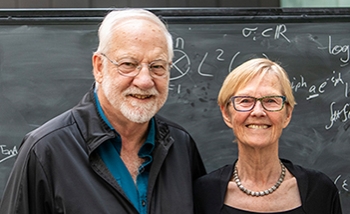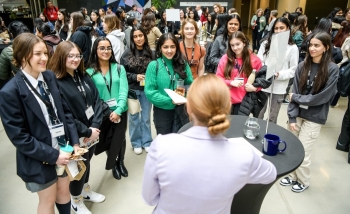How does ocean temperature contribute to climate change? If energy can’t be destroyed, how does it transform? And how do soundwaves help us see the invisible?
These tangible, real-world questions are coming to life in classrooms thanks to three new educational resources created by Perimeter Institute.
Available in English and French, each free resource explores a different aspect of the universe, using lesson plans, hands-on activities and demonstrations, modifiable worksheets, and videos.
“Because we’re working with the researchers, we get the deeper picture,” said Dave Fish, a high school physics teacher who is spending a sabbatical with Perimeter’s Educational Outreach team.
“We make sure the resources can work in a classroom. They’re all tested in classrooms as part of the development program, and we have other teachers review them.”
Every resource can be modified to suit students’ needs – something Fish particularly appreciates. “As a teacher, you always get these resources that are almost right, but there’s a word or a question you don’t like. You end up doing a crude cut-and-paste or telling your students to ignore something,” he said. “When I use the Perimeter resources in my class, I’m able to tweak it to get it just the way I need it.”
This year’s three new releases are “Evidence for Climate Change” (aimed at Grade 10), “A Deeper Understanding of Energy,” and “Wave Model Applications” (both aimed at Grade 11). They join a suite of resources created thanks to funding from the Ontario Ministry of Education, with another four in development aimed at Grade 12, college, and early-university courses.
Not only are the resources free, but every hands-on lesson can be put into practice using inexpensive items. That low-budget approach is not an accident, said Perimeter Educational Outreach Director Greg Dick.
It’s a deliberate effort to level the playing field so that all students have the same access to engaging science. “Our classroom resources are designed to create deep learning opportunities for all students, to let them really experience the science and develop the skills that will propel their future,” he said.
Further exploration
About PI
Perimeter Institute is the world’s largest research hub devoted to theoretical physics. The independent Institute was founded in 1999 to foster breakthroughs in the fundamental understanding of our universe, from the smallest particles to the entire cosmos. Research at Perimeter is motivated by the understanding that fundamental science advances human knowledge and catalyzes innovation, and that today’s theoretical physics is tomorrow’s technology. Located in the Region of Waterloo, the not-for-profit Institute is a unique public-private endeavour, including the Governments of Ontario and Canada, that enables cutting-edge research, trains the next generation of scientific pioneers, and shares the power of physics through award-winning educational outreach and public engagement.
You might be interested in



